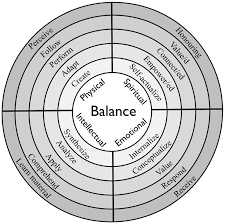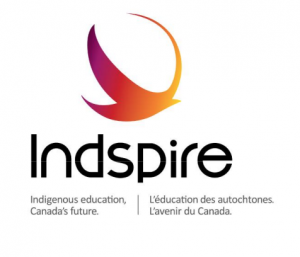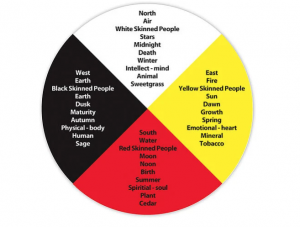After listening to Dr. Lee Brown’s thoughts about the Native medicine wheel and emotions, I searched for publications about the incorporation of the medicine wheel in education. I found an interesting article entitled “Switching from Bloom to the Medicine Wheel: creating learning outcomes that support Indigenous ways of knowing in post-secondary education,” through which the author, Marcella LaFever (2016), suggests a new framework that expands Bloom’s three domains of learning to a four-domain structure based on the Medicine Wheel’s four quadrants. The proposed model has the fourth quadrant, spiritual, deemed as essential for balance in curricular design that supports students’ learning goals (see figure 1).

Four-domain framework from (LaFever, 2016, p.417)
According to LaFever (2016), the four-domain model is a good place to start when responding to Canada’s Truth and Reconciliation Commission’s call to action (i.e., call to action number 62 [ii] asks educational institutions to educate teachers on how to integrate Indigenous knowledge and teaching methods into classrooms and to utilize Indigenous knowledge and teaching methods in classrooms (Truth and Reconciliation Commission of Canada, 2015, p.7)). Also using the Medicine Wheel for curriculum design in education is a step that every educator, across all disciplines, can take to indigenize their teaching practice (LaFever, 2016).
References:



